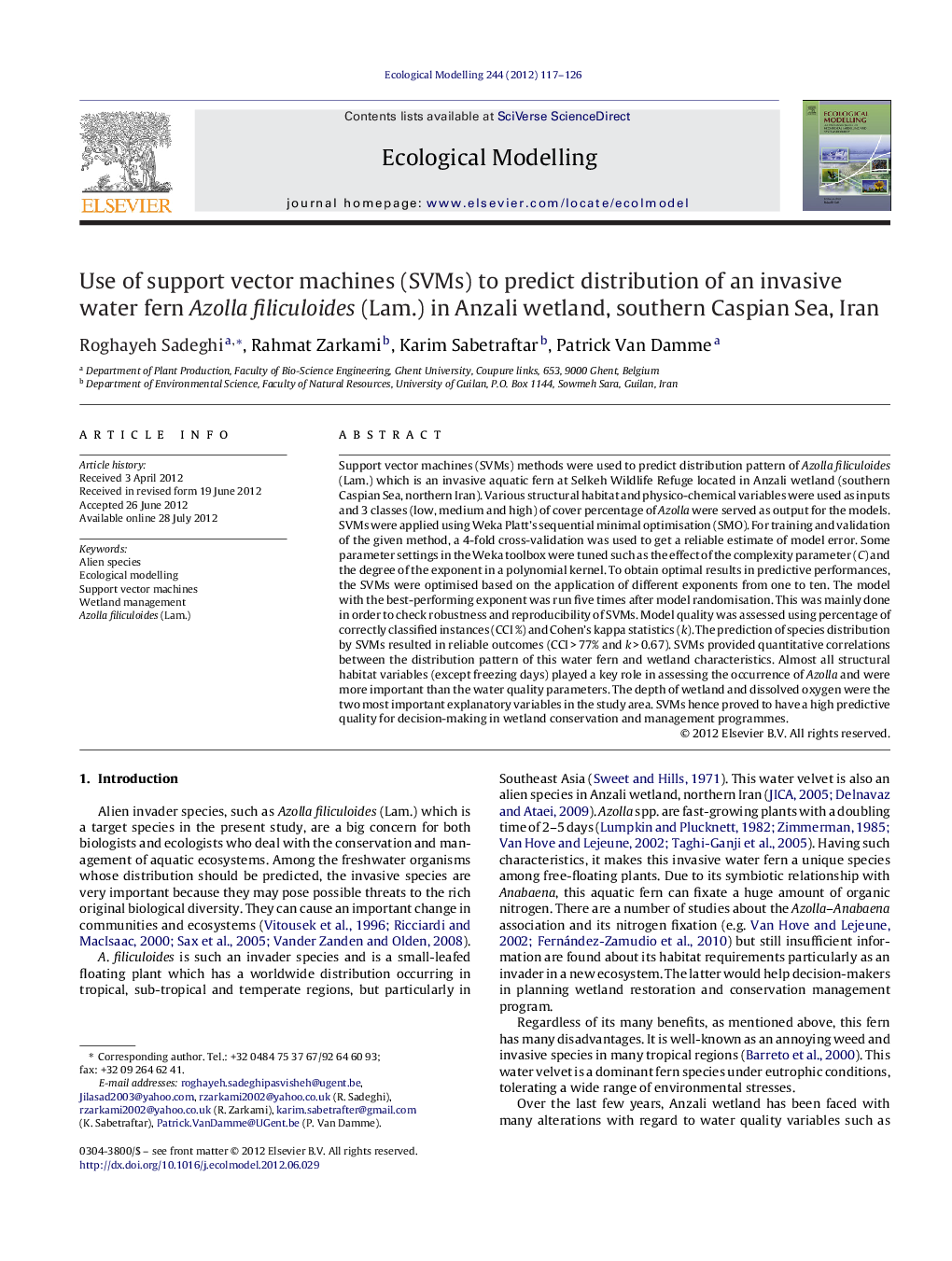| Article ID | Journal | Published Year | Pages | File Type |
|---|---|---|---|---|
| 4376400 | Ecological Modelling | 2012 | 10 Pages |
Support vector machines (SVMs) methods were used to predict distribution pattern of Azolla filiculoides (Lam.) which is an invasive aquatic fern at Selkeh Wildlife Refuge located in Anzali wetland (southern Caspian Sea, northern Iran). Various structural habitat and physico-chemical variables were used as inputs and 3 classes (low, medium and high) of cover percentage of Azolla were served as output for the models. SVMs were applied using Weka Platt's sequential minimal optimisation (SMO). For training and validation of the given method, a 4-fold cross-validation was used to get a reliable estimate of model error. Some parameter settings in the Weka toolbox were tuned such as the effect of the complexity parameter (C) and the degree of the exponent in a polynomial kernel. To obtain optimal results in predictive performances, the SVMs were optimised based on the application of different exponents from one to ten. The model with the best-performing exponent was run five times after model randomisation. This was mainly done in order to check robustness and reproducibility of SVMs. Model quality was assessed using percentage of correctly classified instances (CCI %) and Cohen's kappa statistics (k). The prediction of species distribution by SVMs resulted in reliable outcomes (CCI > 77% and k > 0.67). SVMs provided quantitative correlations between the distribution pattern of this water fern and wetland characteristics. Almost all structural habitat variables (except freezing days) played a key role in assessing the occurrence of Azolla and were more important than the water quality parameters. The depth of wetland and dissolved oxygen were the two most important explanatory variables in the study area. SVMs hence proved to have a high predictive quality for decision-making in wetland conservation and management programmes.
► We modeled support vector machine to predict the distribution pattern of Azolla. ► The prediction of Azolla was reliable based on two performance criteria. ► The structural variables had more contribution to the prediction than the physico-chemical ones. ► The prediction would be more reliable by adding more data and pertinent variables to the model.
